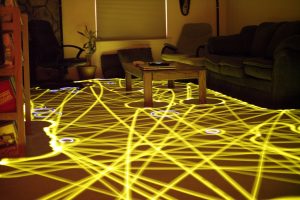A few years back, my family adopted a second pet: a Roomba. This pet was going to take on the quotidian task of cleaning for us, whirring around the room to the commands of some invisible algorithm. With just a touch of a button, it made the familiar action of sweeping and vacuuming hands-free and completely unfamiliar.
I experienced Roomba in its highly polished, end product form, but I wonder how the designers iterated to create that circular animated bot. I wonder what their prototypes could have looked like, what generators (bio-inspiration perhaps?) led to their design direction, and how they utilized the principles of experience design to inform their next decisions, especially considering the fact that the point of a Roomba is to not disturb you. Did they insert their half-finished Roombas into their own homes and role-play a normal Sunday in, observing how it interacted with them?
With the Roomba, we generally presume that it cleans every spot or that it has traversed most of the room. However, often when it hits a corner and blindly continues to collide against things, we just shake our heads and forfeit that our technology isn’t smart enough. Doesn’t that just show our gullible acceptance to the claims of consumer products? For all I know, the Roomba could only clean 40% of my floor and qualify as a “cargo culture” prototype, but I would never know, because I’m not the designer, and I could never peek inside the blackbox.
At any rate, the Roomba shifted my perspective, because for the first time, I saw a robot taking the ease off of my household’s workload. Also, though it is just a modular element of our home, it introduced for the concept and possibilities of a “smart home”.

